My CRM is packed with names, notes, and deals. The question I ask is simple: how do I turn that noise into clarity that moves pipeline now, not next year? Building buyer personas from CRM data is my short path to sharper targeting, faster tests, and fewer wasted touches. Done right, I tighten SQL rate, trim CAC, and nudge win rate up without adding headcount. I keep it practical, measurable, and grounded in what my system already knows.
How I create buyer personas from CRM data
Here is the 6-step sequence I use for B2B service companies with long sales cycles and multiple stakeholders. It ships fast and ties directly to pipeline metrics.
-
Export and clean CRM records
I pull Accounts, Contacts, Opportunities, and Activities for the last 12 to 24 months. I dedupe companies and contacts, normalize titles and seniority (for example, VP, SVP, EVP map to "VP+"), standardize industries and company sizes, and fix missing fields that block analysis, like lead source or primary role. I also stamp a snapshot date so I can reproduce the cohort later. -
Segment by firmographics and deal outcomes
I group by industry, company size, region, and service line, then layer in ACV, win rate, LTV, and cycle length. These clusters show where my flywheel already spins. I exclude outliers that distort reality (one giant deal, an unusual procurement) and note seasonal swings. -
Identify high-value cohorts and decision units
I spot the buying committee inside my wins: economic buyer, champion, influencers, and users. I label each Contact with a role and connect them to Opportunity outcomes. This contact-to-outcome mapping becomes the backbone of buyer personas rooted in my CRM, not in guesswork. -
Enrich with qualitative insights
I pull themes from win/loss notes, CS tickets, NPS comments, sales call snippets, and short post-demo surveys. I am looking for pains, triggers, objections, and success criteria in the buyer’s own words. I flag contradictions early (for example, "fast rollout" vs "heavy customization"). -
Synthesize persona cards
For each decision role, I capture goals, pains, triggers, objections, preferred content, and the messaging that moved them. I include ACV range, typical cycle length, procurement hurdles, and risk flags. I write this as a one-page narrative to avoid bloated, theoretical slides no one uses. -
Validate with experiments and pipeline metrics
I run A/B messaging in email, professional networks, and sales sequences. I test channel-offer mixes by persona and measure demo rate, opportunity creation, win rate, and sales velocity. I normalize for seasonality and capacity, use holdouts where possible, and set stop-run rules so I cut what stalls and double down on what lifts. If I want a faster start, I will consider automation from Delve AI's suite of persona generator tools.
Quick payoff to watch: if my ICP segment already converts at 18 percent from SQO to Closed Won, a 10 percent relative lift takes it to 19.8 percent. On a 2 million pipeline per quarter, that is material.
What a CRM persona is (and is not)
A CRM persona is a buyer profile grounded in my own records. It reflects actual contacts, accounts, and opportunities - touches, content engagement, and outcomes - instead of broad market assumptions. For practical context on using interaction data, see CRM systems like HubSpot.
How it differs from an ICP and a generic persona
- ICP: the account-level fit (industry, size, tech environment). See What Is an Ideal Customer Profile?
- Generic persona: often built from market surveys and interviews; helpful, but not tied to my pipeline. See What Is a Customer Persona? Definition, Uses, and Examples
- CRM persona: my ICP plus contact-level roles, touches, content engagement, deal outcomes, and post-sale signals. It is my data, my story.
Simple object-to-element mapping
- Account: industry, size, region, parent/child structure, revenue with me, churn or expansion history.
- Contact: title, seniority, department, buying-committee role, touchpoint history, content engagement, event attendance.
- Opportunity: service line, ACV, stage history, cycle length, win/loss reason, competitors, procurement steps.
Ownership I assign
- Sales tags buying roles on Contacts.
- RevOps normalizes and enriches data.
- Marketing drafts messaging hypotheses and tests.
- Leadership reviews quarterly shifts and sets focus segments.
Buyer persona examples grounded in CRM
Here are two persona cards I see often in B2B services. The numbers illustrate fields I pull from my CRM and reporting stack - swap them with yours.
Persona 1: The Economic Buyer
- Name: Olivia Chen
- Role in deal: CFO or VP Finance at mid-market professional services firms
- Company size and industry: 200 to 800 employees, business services or software
- Region: North America
- Seniority and team size: VP+, finance team of 8 to 20
- Budget influence: final approver for new vendors; prioritizes ROI and risk control
- Top goals: reduce vendor sprawl, cut time-to-value, maintain predictable costs
- Pains: unclear ROI, long onboarding times, hidden fees
- Triggers: audit findings, renewal fatigue, board pressure on margins
- Objections and responses:
- "This looks like a long ramp." - I show 30/60/90-day milestones with averages from past rollouts.
- "Soft benefits only." - I quantify cost per lead lift, cycle days saved, and forecast accuracy gains.
- Preferred content: one-page ROI summaries, concise case studies, board-friendly slides
- Channels: executive-level email, professional networks, direct referrals
- Deal metrics: ACV 60k to 150k, cycle 75 to 120 days, win rate 3 points higher when finance joins in the first two calls
- Notes from wins/losses: wins cite clear cost model; losses cite "uncertain time-to-value"
Sample narrative
Olivia scans budgets early, flags vendor creep before coffee, and joins only the last two sales calls. She ignores fluff but reads a crisp one-pager with concrete numbers. She wants a plan that shows month-one impact.
Messaging hooks
- "Cut acquisition costs without cutting pipeline."
- "90 days to measurable payback, with finance in the loop."
Persona 2: The Champion
- Name: Marcus Rivera
- Role in deal: Director of Operations or Marketing Ops in B2B services
- Company size and industry: 100 to 500 employees, agencies and consultancies
- Seniority and team size: Director, team of 5 to 12
- Budget influence: recommender with a strong say in the shortlist
- Top goals: clean data, faster handoffs, fewer manual steps
- Pains: fragmented systems, slow reporting, missed SLAs
- Triggers: new head of sales, consolidation mandates, missed performance targets
- Objections and responses:
- "My team is underwater." - I outline a phased rollout and quick wins by week two.
- "Will sales adopt this?" - I share adoption stats and the enablement plan.
- Preferred content: playbooks, integration guides, recorded demos
- Channels: professional communities, targeted email, hands-on workshops
- Deal metrics: ACV 40k to 100k, cycle 60 to 90 days, win rate jumps when Ops runs a guided pilot
- Notes from wins/losses: wins cite low lift for Ops; losses cite "no executive air cover"
Where I source the customer data
I usually find pieces of the buyer puzzle scattered across systems and bring them into a simple map I can trust.
Core systems
- CRM: the primary source for contacts, accounts, deals, and activities (e.g., Salesforce, HubSpot, Pipedrive, Zoho)
- Billing and finance or ERP: revenue, margins, invoices, lifetime value (e.g., QuickBooks, Xero, FreshBooks, Microsoft Dynamics, Oracle NetSuite, SAP, Sage)
- Commerce or order systems: transactions and purchase patterns for services sold online
- Marketing automation: campaign engagement and segment tags (e.g., HubSpot, Marketo, Active Campaign, Mailchimp)
- Advertising managers: audience, spend, conversions
- Support desk: tickets, CSAT, post-sale pain topics
- Internal documents: lead lists, event signups, intake forms
Data map basics
- I choose a universal company ID and contact ID.
- I set merge rules (for people: email plus company domain; for companies: legal name plus website).
- I stamp a system-of-record field per attribute.
- I refresh daily for activities and deals, weekly for firmographics, and monthly for enrichment.
Identity resolution essentials
- Normalize name fields and title casing.
- Standardize industries and titles against a reference list.
- Collapse duplicates with confidence scoring.
- Keep a changelog for merges so I can unwind mistakes.
Access and governance
- RevOps owns the map and merge logic.
- Marketing and Sales have read access for analysis and tests.
- Finance validates revenue fields and LTV.
A 90-day cleanup arc I trust
- First 30 days: audit fields, fix required picklists, stop new bad data at intake, and dedupe the top revenue accounts.
- Next 30 days: backfill missing lead source, normalize titles, add role tagging on all open-opportunity contacts.
- Final 30 days: connect support and billing data, implement identity resolution rules, and publish the first persona cards.
Attributes that move the needle
Not all fields carry equal weight. These consistently predict persona differences and outcomes in my experience.
High-signal attributes
- Firmographics: industry, company size, region
- Contact markers: title, department, seniority
- Buying-committee role: economic buyer, champion, influencer, user
- Lifecycle stage and lead source
- Touchpoint history: meetings, emails, webinars, events
- Content engagement: topics viewed, asset types consumed
- Deal metrics: ACV, stage conversion, cycle days, slipped deals
- Win/loss reasons: short text fields and coded themes
- Tech environment: core systems that shape implementation realities
- Product or service usage: onboarding status, feature adoption
- CS health: health score, NPS, renewal date, expansion history
- Support tickets: topics, severity, time to resolve
- Expansion potential: multi-service fit, cross-sell signals
Mapping tips
- Title normalization: I map strings like Head of Growth, Growth Lead, and VP Growth to a standard role and seniority.
- Derive seniority: C-level, VP+, Director, Manager, IC based on title patterns.
- Negative signals: security red flags, "paused" or "no budget this quarter," legal review stalled, churn risk tag on parent account.
- Documentation: I link each attribute to a persona element (for example, "Win reason contains ‘faster reporting’" - Champion proof points).
Benefits you can measure
Why ground buyer personas in CRM data instead of guesswork? Because they are accurate, testable, and measurable.
Advantages I feel in the numbers
- Precision: role-level insights reduce scatter.
- Segmentation depth: I speak differently to Finance and Ops without writing a novel.
- Personalization at scale: dynamic content keyed to CRM fields is fast to ship.
- Faster testing: I swap hooks by persona and see lift within weeks.
- Measurable impact: I track SQL rate, ACV, win rate, and velocity by persona tag.
A simple ROI sketch
- Baseline: 200 opportunities per quarter, 22 percent win rate, 70k ACV.
- Lift: win rate moves to 24 percent and cycle shortens by 7 days.
- Impact: roughly 4 more deals per quarter and more revenue, while cash comes in sooner.
Mini-case vignette
I segmented closed-won deals by which roles joined the first two calls. When finance joined early, win rate was three points higher. I shifted budget to content and events that pulled finance in earlier. Within one quarter, demo-to-opportunity conversion ticked up, and the team trimmed average cycle by six days.
Practical use cases
- Campaign targeting by persona and industry
- Content roadmap tied to objections and triggers
- Sales enablement one-pagers per decision role
- Pricing and packaging notes that address CFO concerns
- Expansion plays informed by CS health and ticket themes
From personas to personalization
Personas are only as good as the moves they inspire. I start small, test, and learn fast.
Channels and formats to emphasize
- Professional networks: executive perspectives, concise thought leadership, short ROI videos
- Email: persona-specific nurtures, meeting recaps, simple ROI snapshots
- Events: roundtables for finance, hands-on workshops for Ops
- Search: bottom-funnel pages, competitor comparisons, service pages that mirror objections
Messaging ideas
- Economic buyer: risk control, time-to-value, predictable cost structure
- Champion: reduced manual work, integration simplicity, quick wins with a light lift
- Influencer or user: smoother workflows, fewer tickets, better dashboards
Lightweight test plan
- Hypothesis: a cost-focused email for Finance will raise meeting acceptance by 20 percent.
- Audience: contacts tagged as finance decision makers.
- Design: split by control/variant, run 2 weeks or until the sample reaches statistical stability.
- KPIs: meeting acceptance, opportunity creation, stage movement.
- Learning log: what worked, what did not, and why I think that is.
SEO opportunities from personas
- Map pains to intent: queries like "reduce cost per lead," "marketing ROI model," "data cleanup for CRM."
- Publish bottom-funnel pages that mirror objections and procurement steps.
- Refresh case studies with role-specific outcomes and quotes.
Data privacy and governance
Using buyer personas from CRM data means handling sensitive information with care. I keep it clean, legal, and auditable.
Actionable guardrails
- Minimize PII: collect only what I need; mask phone and personal emails when exporting.
- Role-based access: define who can view, edit, and export Contacts, Accounts, and Opportunities.
- Consent management: track source and consent type; respect regional rules like GDPR/CCPA.
- Data retention: set time limits for stale leads and old notes.
- Anonymization: aggregate for analysis when possible; use hashed IDs in analytics.
- Processor agreements: review vendor data protections.
- Audit trails: log field changes, merges, exports, and access.
Rapid risk review
- Do I store more PII than needed?
- Is consent tracked and enforced in campaigns?
- Are exports controlled and monitored?
- Do I have retention and deletion policies?
Incident response basics
- Detect: monitor for unusual exports or access.
- Contain: disable affected credentials, revoke tokens.
- Assess: identify scope, data types, and contacts impacted.
- Notify: follow regulatory timelines and internal comms plans.
- Remediate: patch gaps, retrain, and document.
FAQs
What sample size of CRM records is enough to build reliable personas?
I aim for at least 200 closed opportunities across 6 to 12 months. I can start smaller if I am focused on one service line, as long as I have enough wins and losses to see patterns.
How long until CRM personas impact pipeline metrics?
If I already have traffic and active sequences, I see signal within 30 to 45 days. Bigger shifts in win rate and cycle time often show up in 60 to 90 days.
How is an ICP different from a CRM persona?
ICP selects the companies I want based on firmographics. A CRM persona describes the people and roles inside those companies based on my own contact and deal data.
How do I unify data across CRM, finance, and marketing systems without over-engineering it?
I start with consistent IDs and scheduled exports/imports. When volume grows, I centralize data in one store, define a system of record per field, and standardize merge rules. The key is reproducibility over perfection.
Can small teams do this without a full-time analyst?
Yes. I start with a single service line, one high-value segment, and two personas. I use basic reports and a shared document. I expand once I see lift.
How do I measure ROI from persona-driven campaigns?
I track demo rate, opportunity creation, win rate, ACV, and cycle days by persona tag. I compare before and after periods and account for seasonality and capacity changes.
How do I keep personas updated as markets change?
I refresh monthly with new wins and losses. I review quarterly for bigger shifts in titles, objections, and channels. I archive personas that no longer create lift.
Final thought
Personas that come from my own records are living assets. I keep them simple, measurable, and close to the numbers. My CRM has the story. My job is to keep reading it, testing it, and rewriting the parts that no longer sell. If you want to generate personas directly from your CRM data, try Customer Persona by Delve AI.

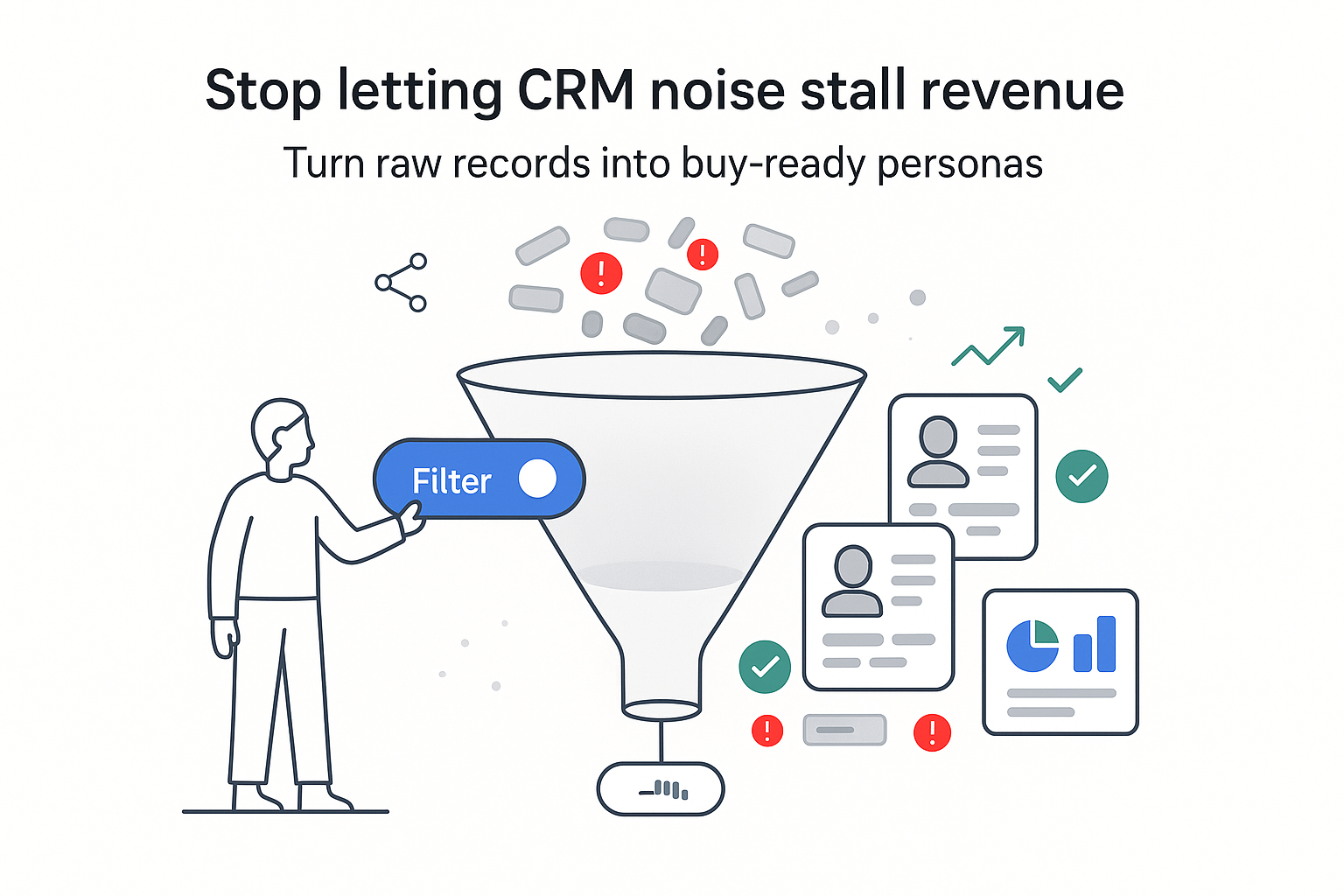

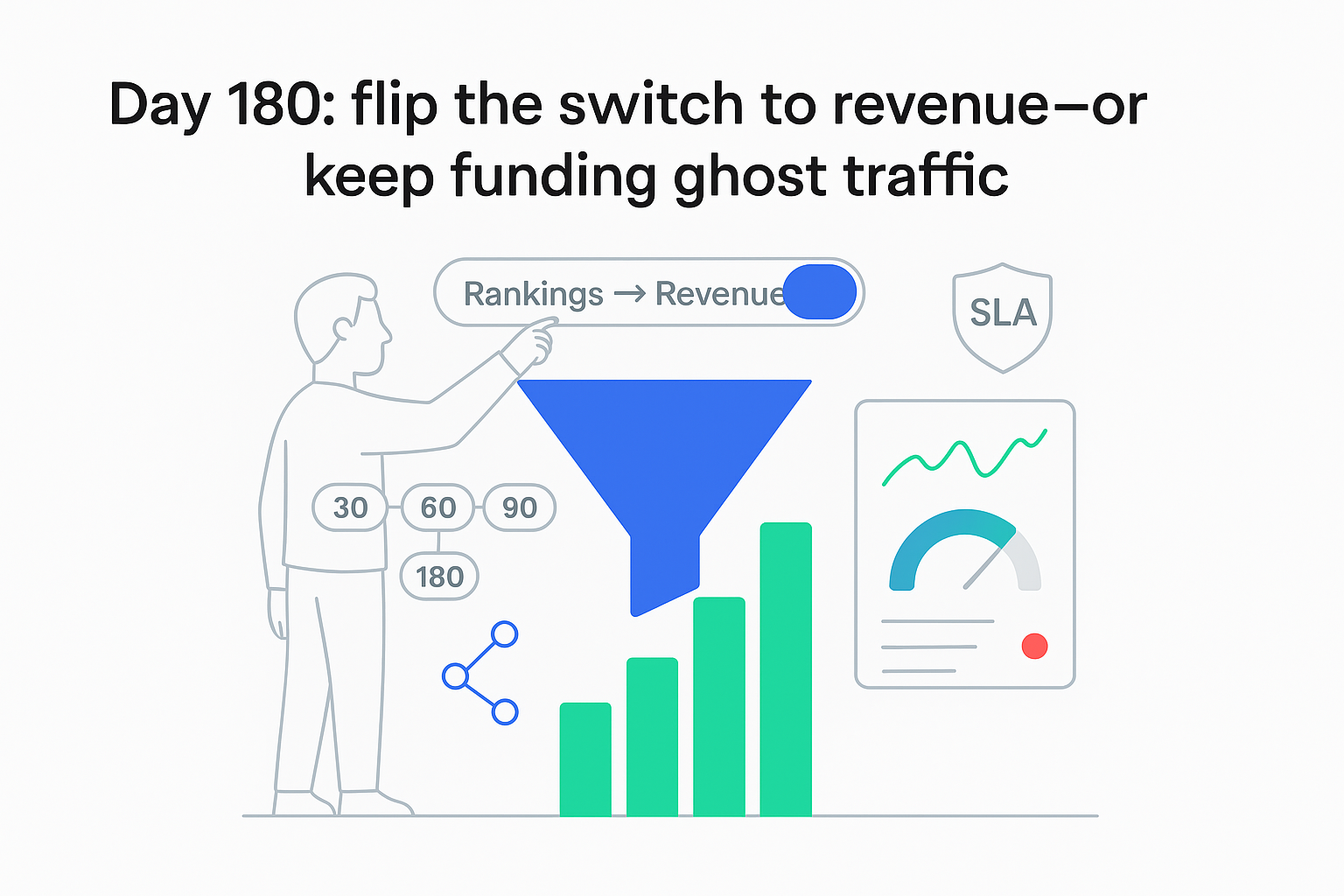
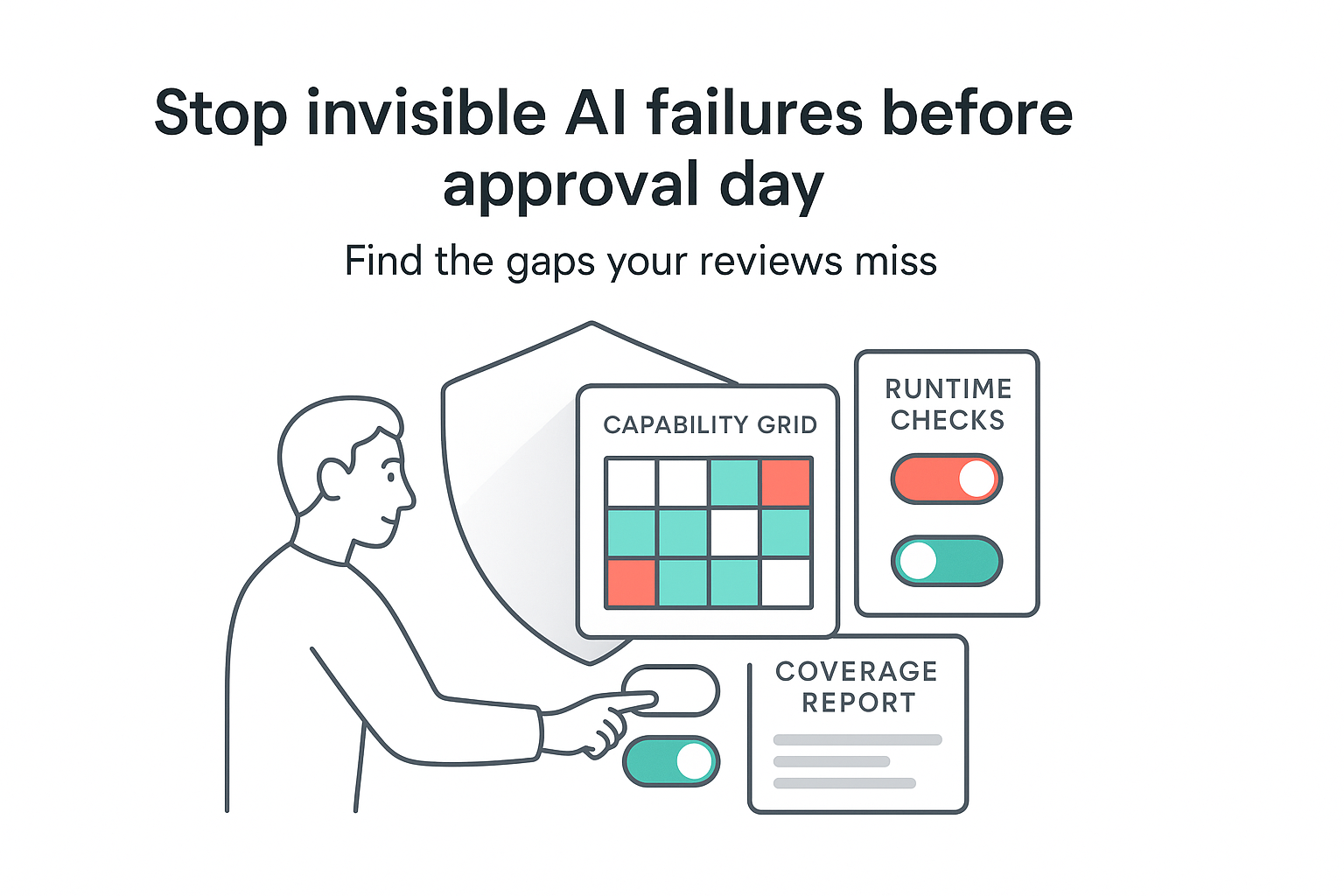
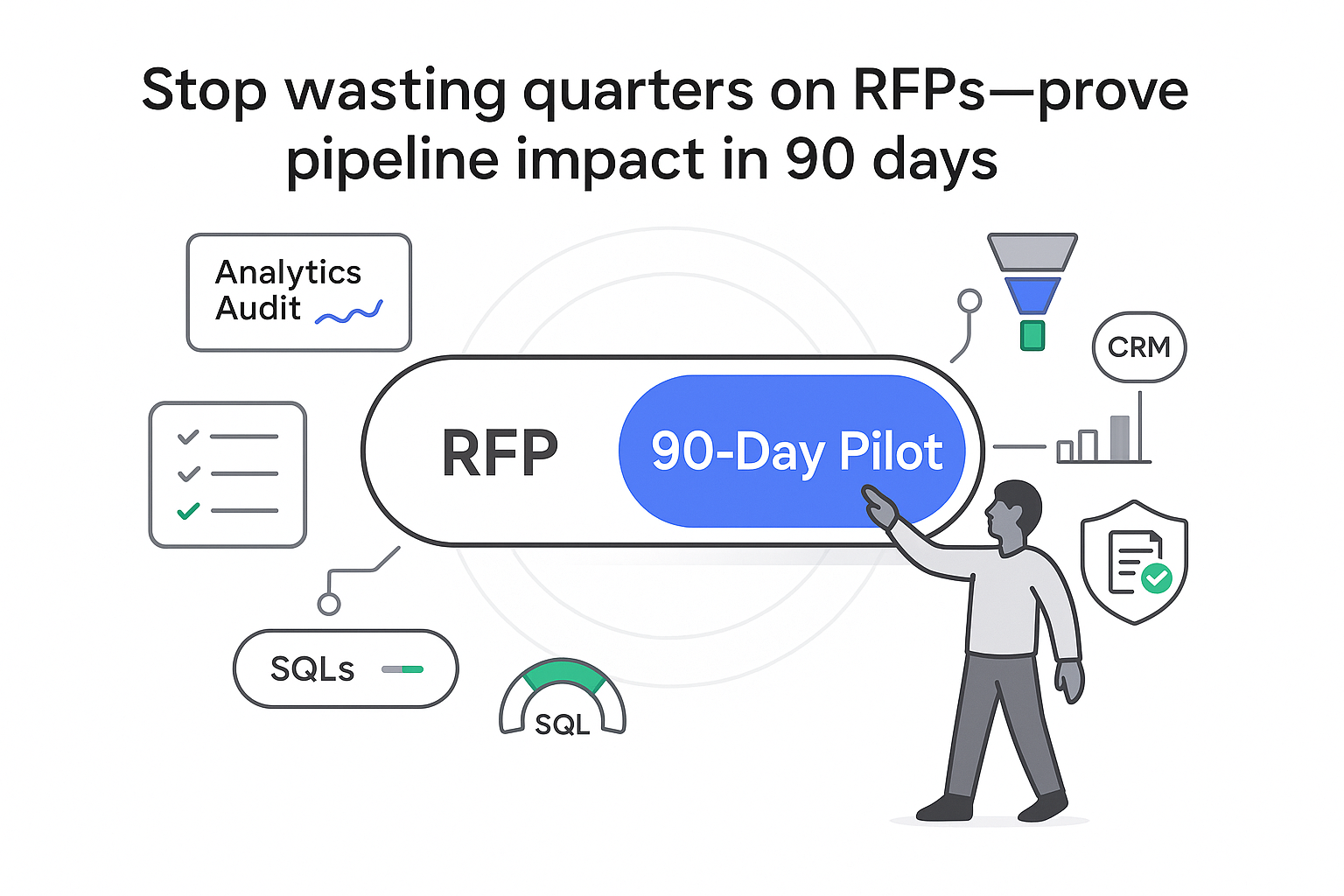
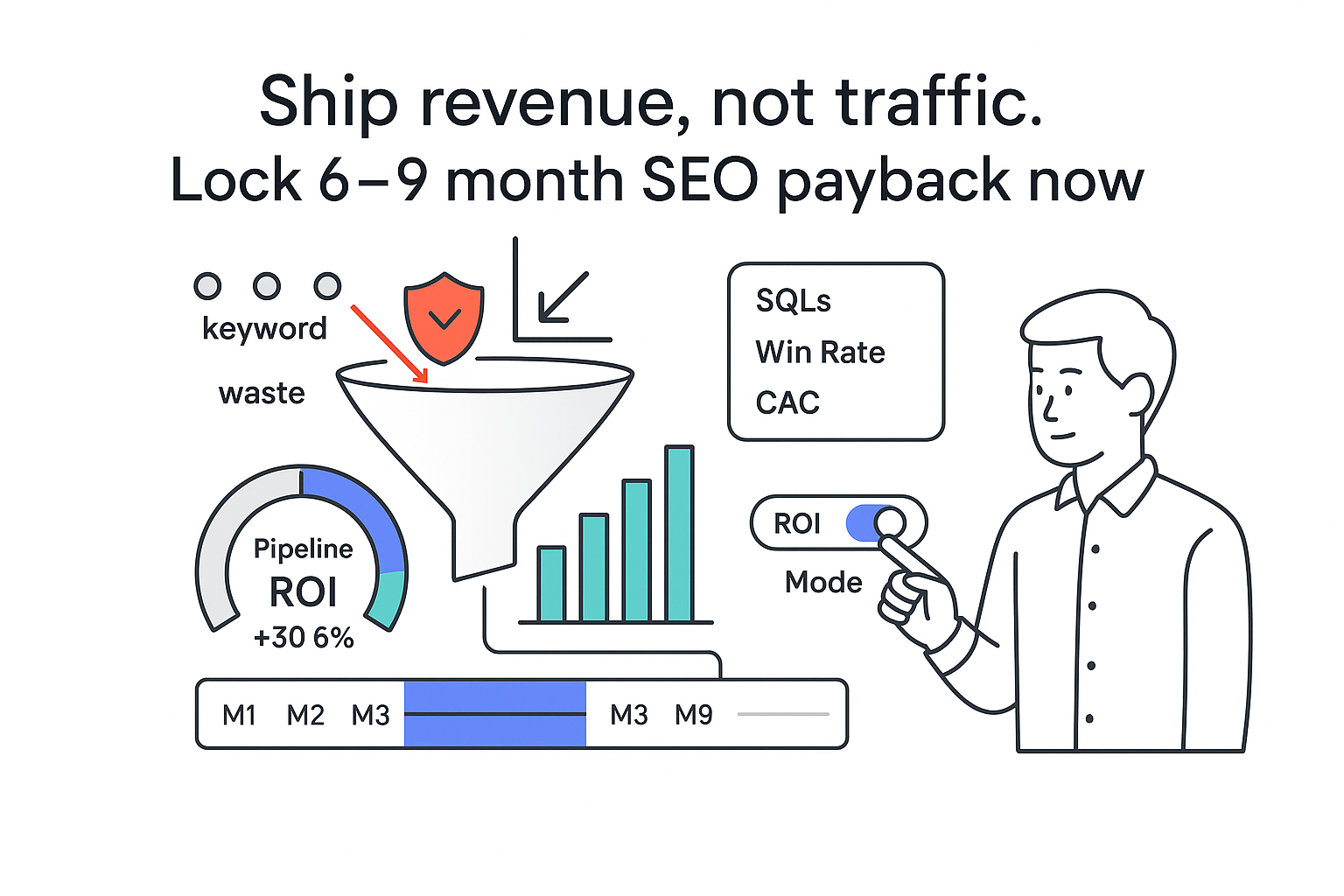
.svg)